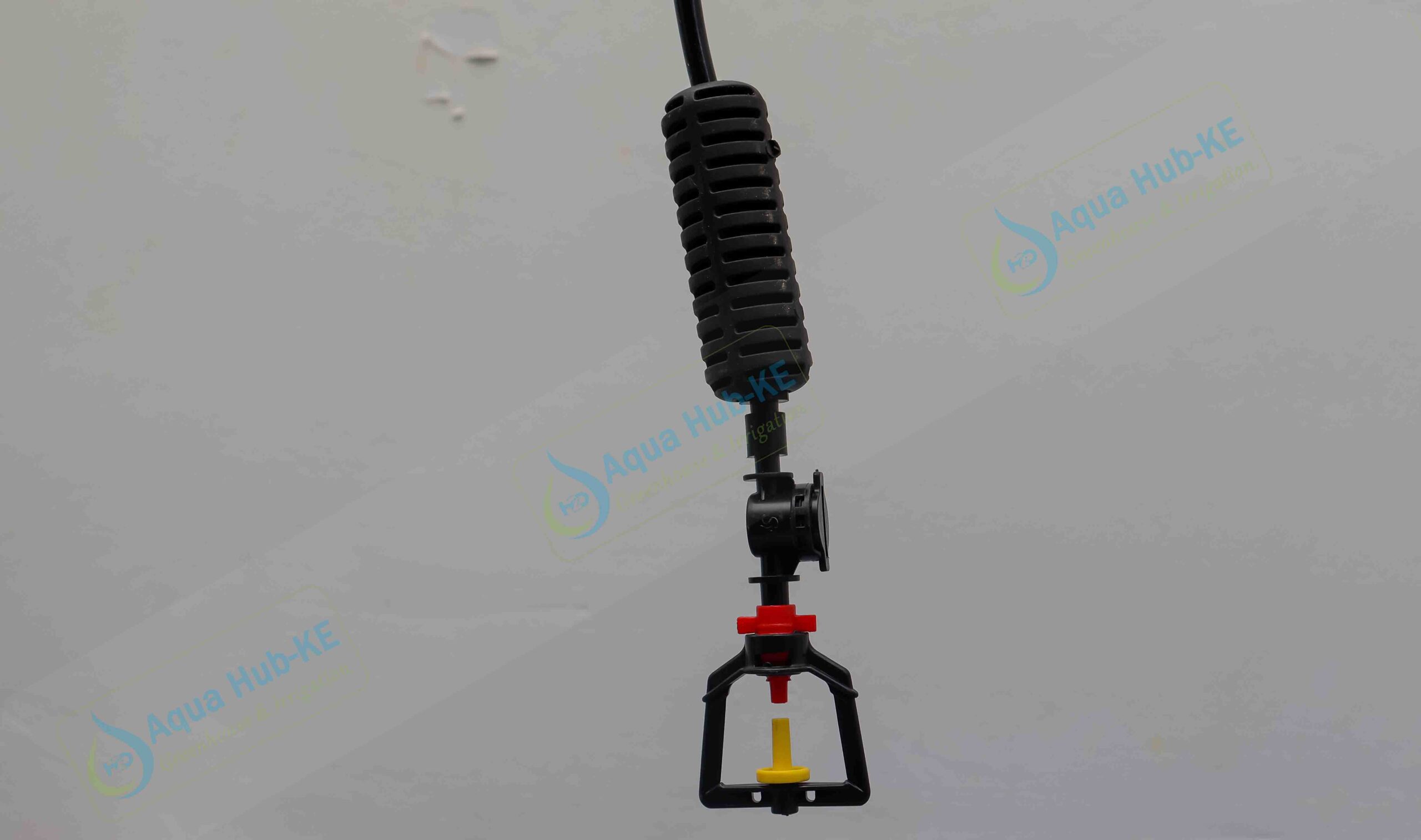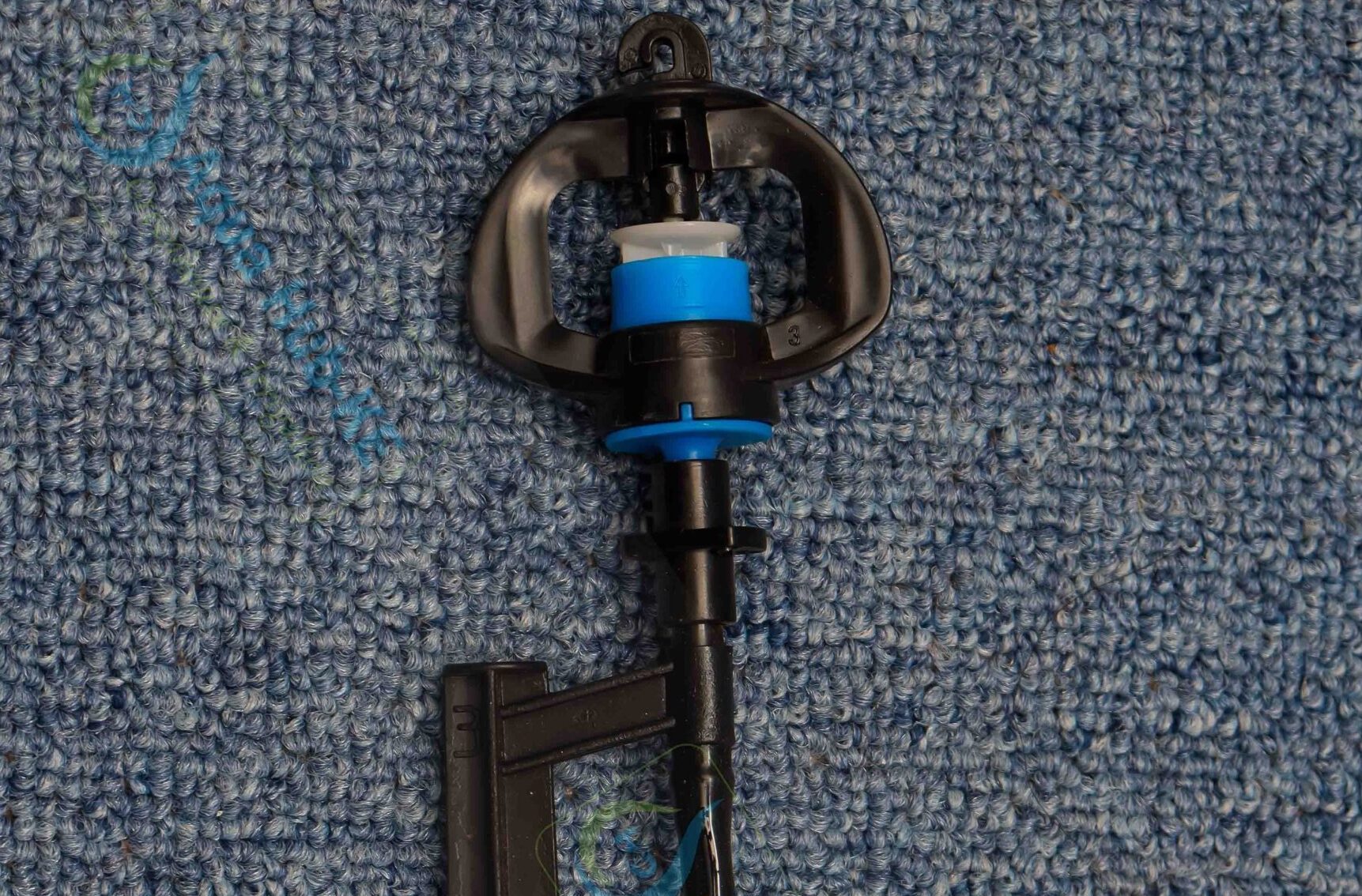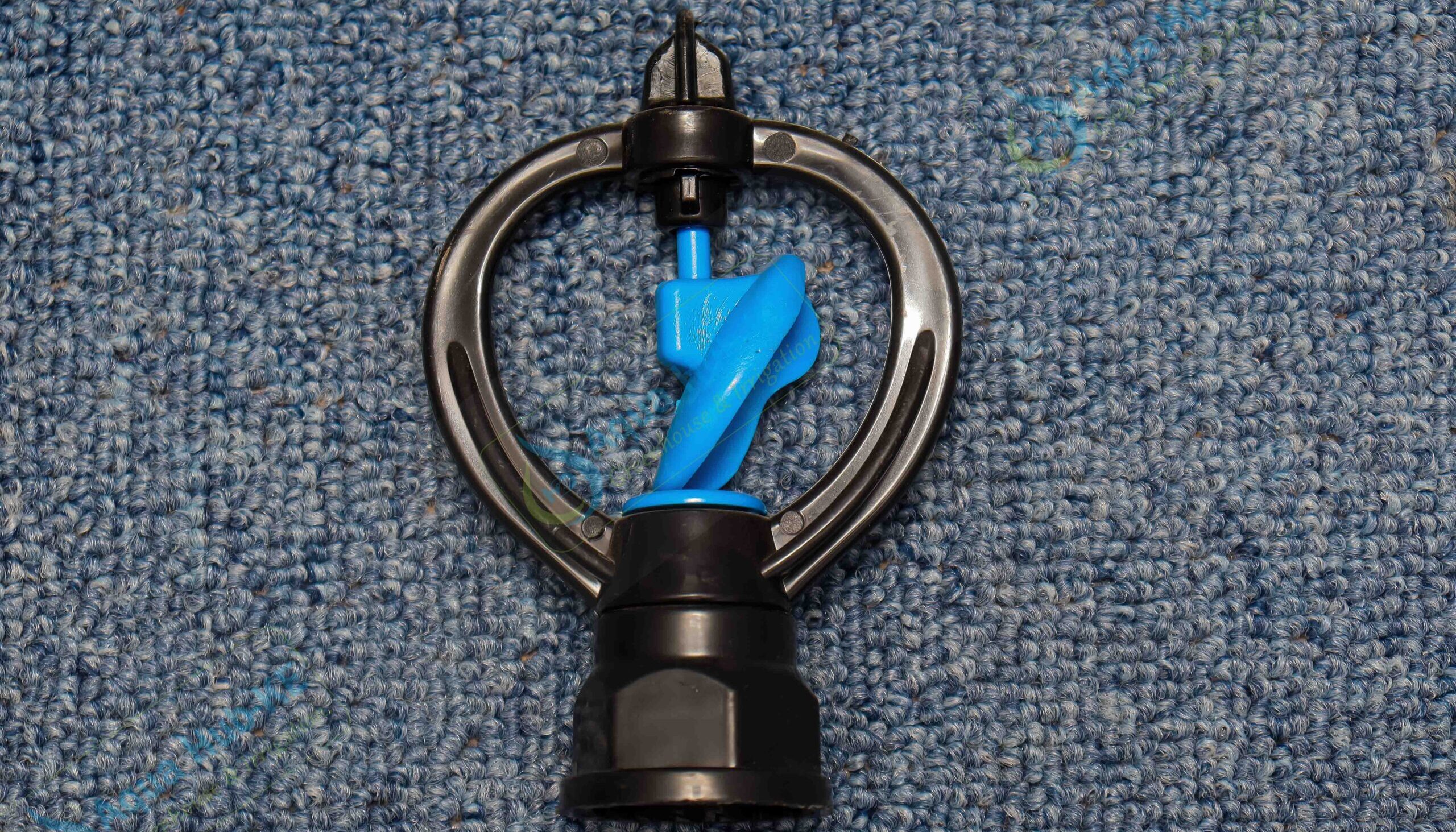Micro Sprinklers & Misters for Irrigation

When it comes to sprinkler irrigation, the spray radius and flow rate is a matter of high concern. Everyone loves to get micro sprinklers with efficient performance using less time and energy.
Call: 0790719020

However, the cost of high pressure and large flow rates of sprinklers may not allow that to happen. We therefore have all the low-pressure mini sprinklers for use in small scale and lower crops.
The good thing is the lower energy use combined with the low cost of installation and irrigation.
Micro Sprinklers in Kenya
Plastic Micro sprinklers and sprayers are available at Aqua Hub Kenya at affordable Prices.
Contact 0790719020 for More information.
What sizes are Micro Sprinklers and Sprayers?
The common size of micro sprinklers is ½ inch with an inlet diameter of 16 mm. These small sprinkler heads take various shapes such as butterfly sprinklers, sprayers, and foggers.
Components of a Micro Sprinkler System
- Mainline irrigation supply pipes
- Connectors such drip and HDPE or PE Tees and elbows.
- Ball corks
- Flexible hose pipes
- Support stands or stakes.
- Risers
- Timers automatically start or shut the system.
- Sensors for detection of water in the soil.
- Sprinklers or spray heads.
Contact 0790719020
Types of Micro Sprinklers in Kenya
Micro Jet sprayers
- Also known as misters. They are ideal for garden beds and greenhouse environments.
- Most irrigate seedlings and young plants while suspended or hanging with thin tubes that supply water to the spray head.
- Maximum spray radius of 3 m.
- Has 2–4 nozzles on the sprinkler head
- Available in different types with different angles of rotations. 90, 180 and 360 degrees.

Butterfly Sprinklers
- They have a butterfly like shape.
- Flow rates of 0-70 L per hour.
- They have 1 nozzle on the sprinkler heads and works on a pressure of 0.5 – 2 bar.
- Angle of rotation, 360 degrees.

Micro Sprinkler with a Stake
- For irrigation of vegetables, seedlings, and flowers.
- Uniform irrigation.
- Rotor blade in the middle to provide even sprays to all directions.
- Has a 13” spike with a tube of 24” micro tube.
Contact 0790719020
How to Install a Micro Sprinkler System
- Lay the mainline pipe around the area to be watered, or you can bury it in the ground.
- Cut the main line pipe and make a connection using connectors.
- Make holes on the main line pipe to connect the micro sprinkler tubes.
- Connect the micro sprinkler tubes to the mainline pipe using micro sprinkler adapters.
- Connect the micro spray pipe to the micro sprinkler head.
Crops that work with micro sprinklers
Micro sprinklers are good for high value crops that grow to shorter heights or less spaced between them.
- Vegetables such as spinach, kale leaves, cabbage, mustard, ground nuts and lettuce.
- Lawns or grasses
- Tea and coffee plants.
- Tree seedlings
- Fruits such as Papaya, avocados, and oranges.
- Greenhouse crops such as flowers and strawberries.
Benefits of Mini Sprinklers in Kenya
- Micro Sprinklers provide even water supply to fields. It minimizes the chances of water wastage or less irrigation rates.
- Easier to install and maintain. Sprayers are easier to install and repair because few connections are done, unlike drip systems.
- Less prone to damages. Sprayers release water from raised visible heights supported by stakes or stands. They are visible hence cannot be knocked, or even nozzles cannot easily block.
- Main line supply pipe connections can be buried, hence less interference during weeding or harvesting crops.
- They are cheap and easier to use or maintain.
- Micro sprinklers and sprayers are durable; they are made of UV resistant and non-corrosive materials.
- Strong and hard sprinkler heads that can withstand climatic conditions.
- They supply adequate water and leaves no dry areas on the fields.
- Micro sprinklers are effective and up to the task. They have quite good flow rates and spray radius that meets the water requirements for most crops.
How to Ensure Efficiency of a Micro Sprinkler
Use clean water for irrigation to avoid clogging the system. You might as well install filters in your system in cases where your water source has silt.
Always flush the system to remove silt.
Open the micro sprinkler and clean it after some time.
Ensure you use the sprinkler head with a pressure rating that corresponds to the pressure of the system.
Work with recommended number and spacing of sprinklers in your farm to ensure water balance and spray radius required.
Points to Consider When Choosing a Micro sprinkler
Check the material of the sprinkler head. Choose a durable and less corrosive sprinkler head, for example plastic sprinkler heads and brass materials.
Work out the appropriate size that matches the water needs of your system.
Consider the spray radius and flow rates of your micro sprinkler. You can check the specifications of different sprinkler solutions to find the flow rate and sizes.
Angle of rotation is another concern as it helps you to calculate the positioning of the sprinklers and number required.
Number of nozzles also matters when deciding which sprinkler to buy. The nozzle number is important as it to ensure a sprinkler will irrigate all places.
Contact 0790719020
Frequently Asked Questions
- How far do micro sprinklers spray?
1-3 M.
- What are micro sprinklers?
Small sprinkler heads with low pressure ratings useful for low pressure applications such as greenhouse crop irrigation.
- What is the price of 16mm mini sprinkler?
KES 550
- What are the three types of micro sprinklers?
-
- Micro jet sprayers
- Butterfly sprinklers
- Micro sprinklers with stakes
- What is the main purpose of sprinklers?
To irrigate high water requirement crops and for use in uneven landscapes, lawns or high-pressure irrigation.
- How much water do micro sprinklers use?
Depends on the type, micro sprinklers can use a maximum of 70 litres per hour.
- How do you install micro sprinklers?
-
- Lay the mainline pipe around the area to be watered, or you can bury it in the ground.
- Cut the main line pipe and make a connection using connectors.
- Make holes on the main line pipe to connect the micro sprinkler tubes to the mainline pipe using micro sprinkler adapters.
- Connect the micro spray pipe to the micro sprinkler head.
- How does a mini sprinkler work?
It provides equal water supply to crop fields in a low-pressure, smooth spray that wet the soil immediately.
